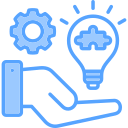Collaborative Project Management Tools: Work Together, Move Faster
Chosen theme: Collaborative Project Management Tools. Explore how the right platforms unite people, processes, and priorities, turning scattered efforts into coordinated momentum. Join the conversation, share your team’s toolkit, and subscribe for fresh insights, playbooks, and stories that help your collaboration scale with confidence.

Why Collaborative Project Management Tools Matter Now
When tasks, files, and decisions live in a single workspace, teams stop chasing status by email. Context follows the work, people see what matters, and updates flow naturally. Comment threads replace side conversations, and newcomers onboard faster because the history is right where execution happens.
Why Collaborative Project Management Tools Matter Now
Live boards, timelines, and workload views reveal bottlenecks before deadlines slip. Managers reassign, unblock, or re-scope with evidence, not guesswork. Stakeholders track goals without micromanaging, while contributors plan focus time around upcoming dependencies and due dates surfaced directly in the tool.

Task and Workflow Orchestration
Clearly defined statuses, owners, and due dates prevent work from drifting. Templates standardize repeatable processes, while conditional logic routes tasks to the right people. Custom fields add structure, so reporting reflects reality, not guesswork pieced together from scattered notes and memory.

Comments, Mentions, and Decision Trails
Inline discussions keep conversations attached to the work. Mentions summon the right eyes at the right moment, reducing delays. Decision summaries pinned to tasks preserve context, allowing teams to revisit the why behind choices weeks later, even when personnel changes or priorities shift.

Dashboards and Goal Tracking
Executive and team dashboards translate activity into outcomes. OKRs link to projects, so progress updates are grounded in delivered tasks, not anecdotes. Burnup charts, cycle time, and throughput illuminate trends, helping teams celebrate wins and course-correct before small issues become big problems.
Integrations and the Collaboration Ecosystem
Chat and Video Conferencing Bridges
Integrate with Slack or Microsoft Teams to turn messages into trackable tasks. Meeting summaries automatically attach to projects, and action items create follow-ups immediately. Conversations stop evaporating after calls because decisions and next steps persist in the shared system of record.
Docs, Whiteboards, and Wikis
Link documents, architectural diagrams, and brainstorm boards directly to tasks. Collaborative docs keep requirements current, while version history prevents confusion. A living wiki anchors standards and definitions, so teams spend less time arguing terminology and more time shipping meaningful work together.
APIs, Automation, and No-Code Connectors
APIs and automation tie your project hub to CRMs, code repos, and support tools. Trigger tasks from form submissions, auto-assign reviewers on pull requests, and sync status back to stakeholders. No-code connectors let non-engineers orchestrate workflows without waiting on a development queue.
Start Small, Expand Deliberately
Pilot with a motivated team using one or two workflows. Capture friction points, refine naming conventions, and publish a simple playbook. Once value is visible, scale templates and training. Invite questions openly and celebrate early wins to build momentum beyond the initial champions.
Rituals: Standups, Reviews, and Retrospectives
Run standups inside the tool, not a separate doc. Use board views for sprint reviews and tag learnings for retrospectives. These lightweight rituals turn the platform into a living agenda, reinforcing shared ownership and keeping attention on what truly moves projects forward.
Champion Network and Peer Learning
Identify champions across departments who coach peers and surface patterns. Office hours, short demos, and example projects lower the barrier to entry. Ask readers to comment with their best training tip, and subscribe to get a monthly kit of ready-to-use templates and checklists.


Use least-privilege access with clear roles for creators, contributors, and viewers. Private spaces protect sensitive work while shared folders encourage visibility. Auditable sharing links and expiration policies reduce accidental exposure and keep external collaborators aligned without granting broad permissions.

Understand where your data lives and which standards apply. Map projects to compliance needs and document controls in the tool’s wiki. Scheduled export checks, retention windows, and audit logs create confidence during vendor reviews and safeguard institutional memory during staff transitions.

Too many custom fields create chaos; too few limit insight. Establish naming conventions, lifecycle policies, and template governance. Give teams freedom within a tidy framework, and invite feedback on your guidelines so the system evolves with real-world demands rather than rigid theory.
Pick a few leading indicators: cycle time, on-time delivery, unblock latency, and meeting hours saved. Tie these to goals and review them regularly. When metrics improve, document what changed so your playbook becomes a growing library of tested collaboration practices.
